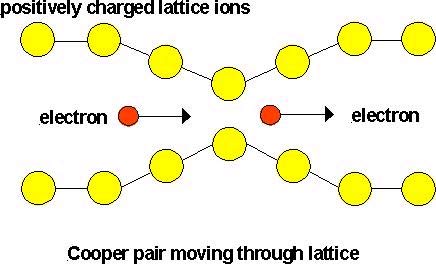Fermion pairs do not have superfluidity
In recent years, physicists have realized that fermions (such as electrons) can exhibit superfluidity because of their ability to pair at very low temperatures. Now, a group of American scientists has demonstrated that if a mixture of fermions is created with most of the same spin state, they can come to pair without behaving like a super flow a bit.
This discovery allows us to have a much more complete insight into high-temperature superconductors, which are involved in pairing but are often too complex to study directly ( Theo The results just published in Science 316 867 ).
Particles are divided into two categories : boson particles with integer spin values and fermions with half-integer spin values. When cooled to near absolute temperature, the whole boson particles will fall into ground state, then undergo a collective phase transition into a special phase called Bose condensation- Eistein (Bose-Einstein condensate: BEC). When in the Bose-Eistein BEC condensate state, the boson particles move as a whole consolidation, expressing an unusual macro quantum effect, such as superfluidity.

Pictures of Cooper pairs (Photo: VatlyVietNam)
Although quantum mechanics forbids any two fermions to occupy the same quantum state, they can, in a certain condition, continue to condense into the BEC state by coupling under gravitational force and thus consider as raw spin bosons.Pairing is strongest when the spin states of two fermions in a pair are different (opposite directions) - electrons, for example, make ' Cooper ' pairs when they are in the ' up ' spin state. and ' down ', ie ' upward ' and ' downward '. Because electrons are electrically charged, their superfluid currents will also create superconducting currents, an important property described by Bardeen Cooper Schrieffer theory (BCS theory).
However, superfluidity will become less common in the system if the ratio of the spin states of the fermions is unbalanced. The discovery was discovered last year (2006) by a group of scientists at the Massachusetts Institute of Technology (MIT), USA, led by Wolfgang Ketterle, who used radio frequency electromagnetic fields to transfer bile. degree of spin states in a supercooled gas of neutral fermionic atoms - a much simpler system to study than superconducting electrons.
They found that at a temperature low enough, the gas is divided into two regions : the minority of spin-coupled states at the gas core with the same amount as the number of fermions from the majority spin states, thus behaving like a superfluid; and the remainder of the majority of the spin states will be removed around the outer layer.

An imbalance diagram - temperature describes the Chandrasekhar limit - Clogston is known
to prevent superfluidity (According to Science 316 867).
Now that same group of MIT has seen what happens if the ratio of fermion spin states is extremely unbalanced. To do this, they prepared a mixture of lithium-6 atoms (fermions) with 95% of particles in the same spin state, and then used radio frequency spectrometer to measure the stimulus spectrum. This stimulus allows them to search for atoms in pairs, which are highlighted by a high-frequency characteristic peak.
In this very unbalanced mix, the so-called Chandrasekhar limit - Clogston is known to prevent the superfluid state that was ever created at low temperatures - and this is indeed observed by Ketterle and his colleagues. . However, they found that the minority spin state (5%) continued to link together in pairs.'When fermion pairs are created, they will eventually condense at low temperatures, which always happens,' Ketterlet said. 'Now we have a region where they have just created and never condensed'.
Ketterle added that by studying the fermion pairing, which does not condense into a low-temperature superfluid, physicists can rarely test the theory of a system that we have. Very few things like high-temperature superconductors, which show the bonding above condensation temperature. However, he said that this discovery will also create a very difficult question as to how fermions can pair without a process of becoming a superfluid: 'We have to show what is meant. meaning of pairing. I cannot say it is the result of 'customary monogamous relationship' or that each atom is' attracted 'by some other atoms in other spin states'.
Elektron
- Great invention: Found legendary nuts
- Sea rabbit Aplysia
- DNA - a talented detective
- Two collision galaxies are 424 million light-years from Earth
- Interestingly, the numbers in mathematics are unknown
- Charge your phone battery only once in a year thanks to 'ghost' seeds
- Scientists create a new physical state - both solid and liquid
- The newly discovered material state has historical significance with modern computers
- 2016 Nobel Prize in Physics and the mystery of strange materials
- Guess the lover through the gene
- Prawns (Penaeus orientalis) migrate to the east
- Pairs of idea birds are different
 Daily use inventions come from universities
Daily use inventions come from universities Special weight loss device helps prevent appetite
Special weight loss device helps prevent appetite 8 inventors were killed by their own inventions
8 inventors were killed by their own inventions Iran invented a motor car powered by water
Iran invented a motor car powered by water